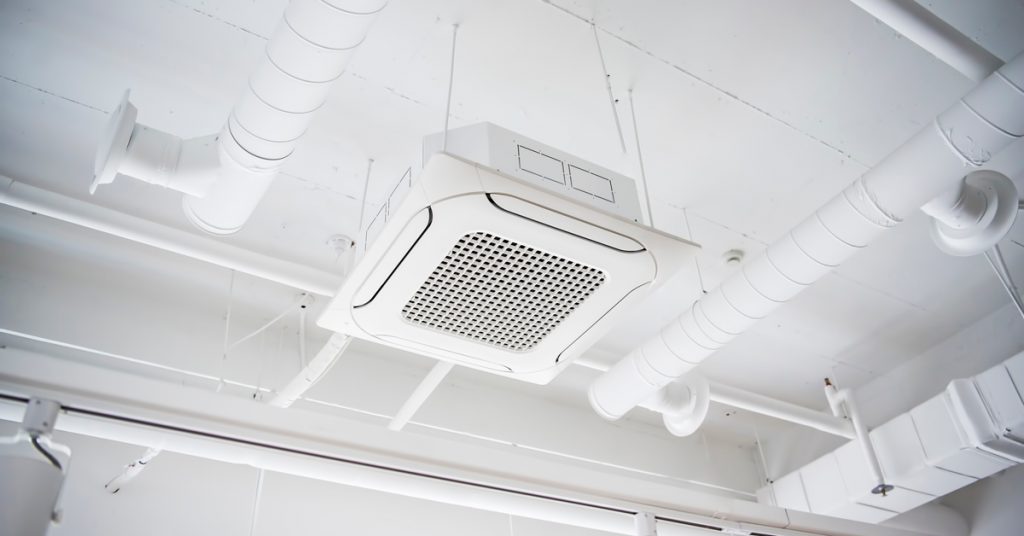In February 2021, Melbourne plunged into its third lockdown after a COVID-19 outbreak started within a hotel quarantine facility. How did the virus spread when individuals were confined to their own separate rooms? The outbreak had stemmed from a nebuliser and was spread across the building through a poor ventilation system.
So far in our series of articles about ventilation, we have spoken about improving the ventilation in individual rooms and HEPA-filtration but the February 2021 Hotel quarantine leak is a prime example of the importance to have adequate ventilation across an entire building.
Looking at ventilation across a whole building is different to one room. First of all, the complexity of each building can vary from a small unit to a skyscraper apartment complex. Unfortunately, there are very limited products to efficiently ventilate an entire building but whilst the technology is developing there are some methods we can use to improve ventilation and air flow throughout your whole building.
Ways to improve ventilation in buildings
Track pollution source
This point focuses on trying to eliminate extraneous pollutants that can be prevented. This point may be more of an issue with older buildings but nevertheless, these can create more particles which are hazardous to our heath:
| Pollutant | Fix |
|---|---|
| Asbestos | Removal of asbestos |
| Carbon monoxide | Servicing or removal of gas heaters. |
| Formaldehyde/pressed wood | Fumes emitted from wooden products |
| Mould | Check no areas are damp or from flood. |
| Aerosols | Pesticides and room sprays. |
Use of CO2 sensors
If you would like to get quantitative data on your rooms ventilation, you can always invest in a CO2 sensor to measure the concentration of CO2 in the air. Studies have shown rooms with CO2 levels below 600ppm have a much lower rate of airborne transmission compared to rooms above 600ppm. Use a CO2 sensor to find any weak spots in your buildings airflow and gauge the overall effectiveness of your buildings ventilation.
Reassess the rooms usage
There some administrative ways to reduce the number of particles emitted into a room. Increased traffic and crowded spaces can greatly increase the risk of airborne transmission. Encouraging social distancing, limiting the room density and or even repurposing the room can reduce the number of particles emitted by people.
Improve natural ventilation
One of the cheapest and easier options include opening a window or doorway to allow fresh air into the room to dilute the number of particles indoors and naturally turn over the air.
Operating mechanical ventilation
Mechanical ventilation is another term for:
- Heating and cooling units
- HVAC systems and vents
- Fans
Mechanical systems allow for constant airflow throughout the entire building through ceiling vents. Large vent systems can be found in all large buildings. The only con with HVACs is they do not necessarily purify the air. Their primary job is to promote airflow.
Investing in air purifiers
The pandemic has seen an influx of HEPA filters and portable air units come to the market. They are a great, affordable alternative to drastically improve ventilation. Air purifiers come in different sizes to suit a wide range of rooms and workplaces.
Natural and mechanical ventilation moves the particles to another spot or outside where they are less likely to be inhaled, however, HEPA filters found in air purifiers can actually remove particles as small as 0.1um. HEPA grade air purifiers are the best way to remove pollutants, bacteria and viruses from the air and protect the health of your workers.
Air purifiers can turn over the air in one room at a time but if you want to improve the ventilation across the whole building you could purchase multiple air purifiers and strategically place them around your building and open doorways to also promote natural airflow.
Key takeaways
As far as whole ventilation building, there are no complete solutions as of yet and whole building solutions are a concept to keep pursuing. At this stage HEPA-filters in each room is very effective. The best way to improve ventilation across the building is a combination of air purifiers and effective HVAC systems to both clean the air and turn it over.
Don’t forget, social distancing is the best way to prevent transmission too. If people are too close to each other in low ventilation, filtration does not really help immediate inhalation of the plume emitted by the by another person, and transmission is almost instantaneous.
Regardless of the size of your workplace, we should all focus on quality air filtration in the best interest of everyone’s health.
Westlab are the exclusive distributor for Swiss-designed and engineered Aeris Aair Range,To purchase an Aeris Aair filter or a wide range of medical products, contact Westlab today.
